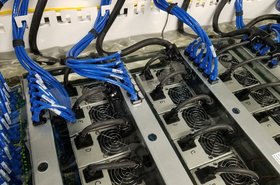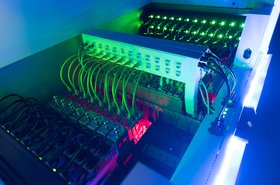As computing needs evolve, data centers are evolving, too, to meet the organization’s business goals. Artificial intelligence, data analytics, streaming video, and the constant drive for more power, speed, and storage are challenging the status quo of the large, enterprise data center. And as organizations expand their capabilities with edge and modular facilities, the question of how to cool the equipment looms large. Air cooling uses a lot of power and takes up space, so anything that can cut down on costs, and increase how much space is used for computing power, is a boon. This is where liquid immersion cooling enters the picture.
The need for Edge and modular
In 2020, the pandemic has impacted how people and businesses consume computing power, and has increased demand for real-time services that edge data centers provide. We’re seeing increasing use of modular and edge data centers to meet users’ need – from activities like consumers working at home, the increased use of Internet of Things devices, a spike in telehealth appointments, and businesses adopting vital, real-time technologies that require the kind of computing power they can only get from edge facilities. Gartner predicts that by 2023 there will be more smart devices at the network edges than conventional devices.
Modular, containerized data centers are part of the picture for both edge and enterprise applications. Especially in this time of increasing pressure on IT services and data centers, modular data centers, with pre-designed, ready to assemble components, allow expansion of storage and computing power in months rather than the years needed to build an enterprise data center. And the market for modular solutions is growing exponentially, as organizations realize the benefits of modular setups to add capacity and eliminate the traditional bottlenecks in bringing new data centers and IT services online.
The role of immersion cooling
Liquid single-phase immersion cooling is a low maintenance solution for data centers of all shapes and sizes. As data centers manage more and more next generation applications like the Internet of Things and artificial intelligence, they require higher density processors, which produce more heat. Which requires more cooling power.
Data center owners and operators get the most return on their investment in computing equipment—servers and storage to deliver the services. Budget allocated to cooling is important, but takes away from needed compute power. Liquid immersion cooling is a way to reallocate power from cooling to an increased critical load in the same power envelope—because it uses 5-20% less power than air cooling.
Air cooling can’t keep up with cooling modern data centers; with the limit of 15kW per rack, it is becoming a less feasible method in many organizations. Liquid immersion cooling can cool even the highest density racks—supporting 200 kW/rack densities.
Modular and immersion cooling
Modular data centers allow organizations to expand their capacity relatively easily. Some organizations add modular containers to increase the size of a data center without the requirement of new construction. Some use modular for edge computing. Whatever the underlying need for the increased capacity, because arrive pre-designed and pre-packaged a modular data center is also the perfect way to step into the world of immersion cooling.
Modular solutions can tie into most any existing infrastructure and with immersion cooling can deliver up to 200 kW of compute power per rack in a much smaller footprint—all you need is access to water, electrical and networking.
The edge and immersion
Edge facilities are ideal for remote locations where an organization needs data storage and computing power, and for locations requiring reduced latency, that can be located near the end user. And because these locations often do not have IT staff, or any staff at all, or may be located in areas with suboptimal conditions, like high humidity or extreme heat or cold, these data centers need to be as reliable as possible.
Liquid immersion is particularly well suited for edge facilities in harsh environments, they are self-contained and improve security and protect sensitive IT equipment from dust and other hazards. Fewer moving parts than air cooling mean reduced need for service or sending staff into the field for repairs. And a long thermal ride-through keeps the equipment cool for longer if there is a power outage, maintaining service while staff can be sent to deal with the issue.
Liquid immersion cooling is the answer
Whether you need to increase the compute density in the same footprint, add computing density in new locations, edge or otherwise, or build your data center’s resiliency—for your next generation data center, you need the next generation of cooling: liquid immersion cooling.





